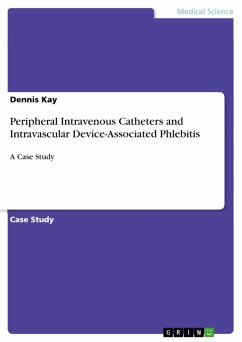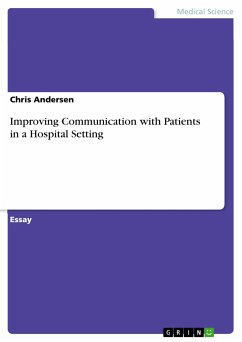Case Study from the year 2015 in the subject Nursing Science - Nursing Management, grade: 72, Griffith University, language: English, abstract: Peripheral intravenous catheters have long been used to deliver fluids and medications into hospitalized patients, especially in acute cases. The use of peripheral intravenous catheterization (PIVC) is associated with a complication known as phlebitis - that is, vein inflammation. Besides infection, mechanical and chemical factors have been attributed to the occurrence of phlebitis. Generally, phlebitis causes PIVC failure, pain, increased hospital stay, and undermines future PIVC, etc. Phlebitis resulting from infection could lead to bloodstream and subsequent systemic infection. The current measures for reducing the risk of intravascular device-associated phlebitis, such as the use of catheter materials that minimize injury and discomfort, are not enough. Considering that peripheral intravenous catheters are used in up to 70% of hospitalized patients, the need to find a best-practice approach to catheterization cannot be stressed enough. This book outlines the risk factors and symptoms of phlebitis and proposes a best-practice approach for preventing intravascular device-associated phlebitis. This ebook was created by Denis Kay, an administrator of www.havardessays.com. You can request to have a similar ebook, or any other nursing paper, written for you by visiting and placing an order on the stated website.








